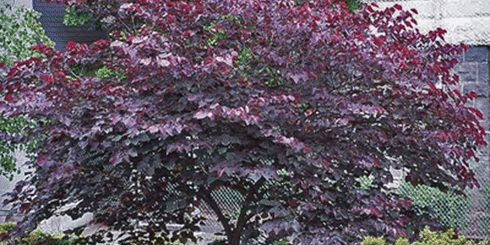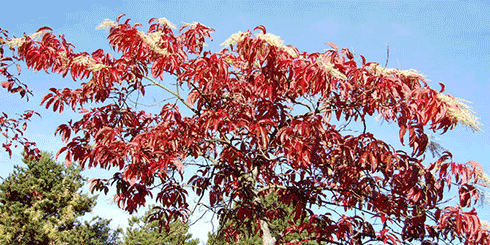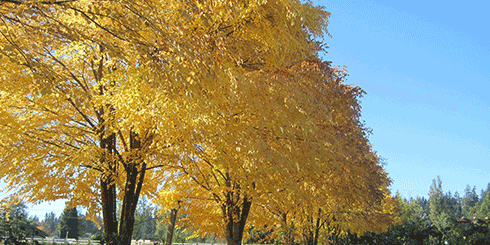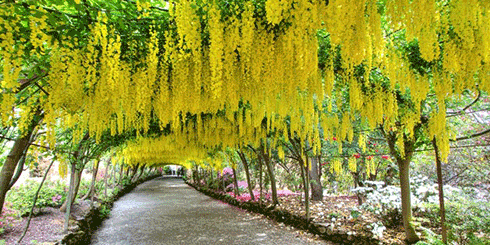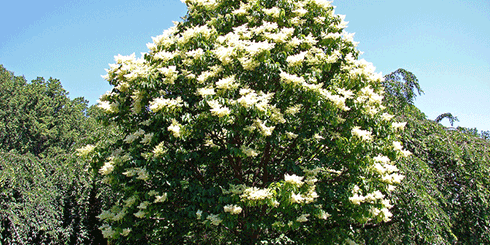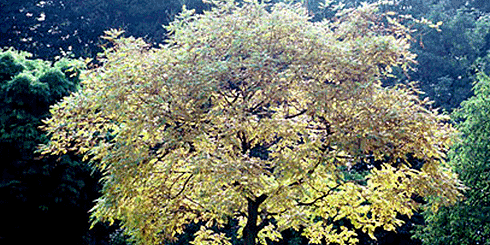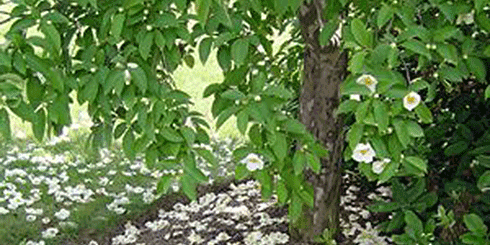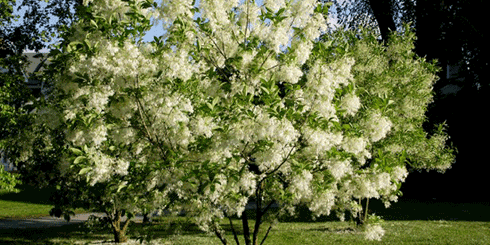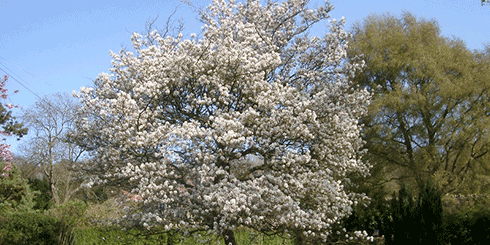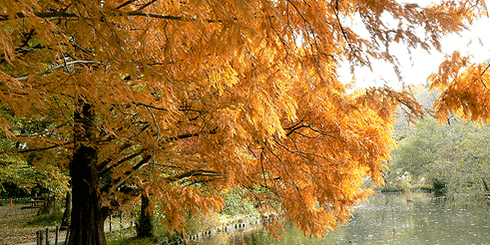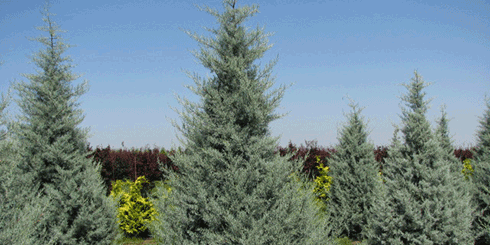Uncommon Specimen Trees
-
Cercis canadensis 'Forest Pansy'
A variety of Redbud that is known for its purple/red new leaves which fade to a purple/green during the summer. Purple/pink flowers appear in the spring just before leaf emergence. A nice tree for narrow lawn islands or any accent position. Needs sagacious pruning to develop strong structure. Height: 20 to 30 feet; Spread: 15 to 25 feet.
-
-
Oxydendron arboreum 'Sourwood'
Sourwood is a slow-growing tree which produces hanging white panicles of flowers in mid-summer. The fall color or brilliant red is one of the most vivid in any tree species. Notorious for requiring acidic soil (hence the common name "Sourwood"), it is difficult to transplant and needs sufficient water in the heat of the summer. It has no serious pests.
-
-
Cercidiphyllum japonicum 'Katsura'
An extremely beautiful specimen tree that should be placed in every landscape. Michael Dirr has written that if he could only have one tree, this tree would be the one. It is especially useful in the home landscape in its weeping form. New growth is a reddish purple, which changes to a bluish green in maturity. Fall color is apricot. Once established, it is a vigorous grower.
-
-
Laburnum x watereri 'Goldenchain'
An airy, deciduous tall shrub or tree (usually 20-25' maximum) with beautiful yellow hanging flower clusters in early summer; requires neutral to alkaline, well-drained soil. This plant is not native to North America and specimens are hard to find. However, there are several growing in older landscapes in our area and they are spectacular when in bloom. This tree can be confused with the "Golden Rain" Tree (Leaves of both are radically different).
-
-
Syringa reticulata 'Japanese Lilac'
This tree makes an excellent specimen tree, flowering in mid-June, later than common lilac. In most cases, it seems to be a hardy tree with occasional pest problems that can be controlled. It will never be a large tree, making it suitable as a "patio tree" and while the blossoms are not as sweet-smelling as regular lilac, they do have a pleasant odor and can be stunning in appearance.
-
-
Koehlreuteria paniculata 'Golden Rain'
This is a tree that should be planted more often. It is not fast growing in our area and maintains a nice shape. The yellow flowers are very unusual and striking. A great shade tree in the lawn, we have not seen it affected by any disease or insect problem. What's not to like?
-
-
Stewartia pseudocamellia 'Stewartia'
A beautiful specimen tree that flowers in mid-summer (July-August). The exfoliating bark is an additional feature. The time of flowering is reason enough to feature this tree in a landscape. It is also basically free of disease and insect problems and is hardy to Zone 5. It is generally slow-growing to 15' high and grows best in light shade, at least in hottest part of summer. Prefers moist, cool, humus-rich, slightly acid soil, with good drainage.
-
-
Chionanthus virginicus 'White Fringetree'
This a small to medium tree that is mostly grown for its white flowers in spring, usually during May in our area. Both male and female plants have flowers. The male is reported to be showier, but only the females have the blue fruits in the fall. We haven't noticed any problem in transplanting this tree but it does seem susceptible at times to disease and it does require water during the establishment period. It is also known by the name of "Old man's beard" and similar takeoffs.
-
-
Amelanchier 'Serviceberry (Juneberry, Shadbush)'
Often referred to as a four-season plant - having interest during the course of the entire year. There are many species of this plant, all having particular size, shape and cultural characterisics. Generally, it is a small tree with white flowers in the spring, followed by edible berries which persist through great fall leaf color into the winter. We have found it to be extremely hardy with no insest or disease problems and all in all requiring very little maintenance.
-
-
Metasequoia glyptostroboides 'Dawn Redwood'
This species apparently has been in existence for 50 million years. The current trees in our country have sprung from seeds collected in 1944 in China. I am amazed at how many people become infatuated with this tree once having it grow in their yard. No serious pests are known; it keeps a very good pyramidal shape and is a great tree to establish a micro-environment.
-
-
Cupressus arizonica 'Arizona Cypress - Blue Ice'
This is an excellent specimen evergreen plant which can also be used for screening similar to the use of arborvitae and junipers. It is somewhat experimental in our area, but appears to have little pest problem with the possible exception of canker. It has spectacular blue color and texture along with a cool name – what’s not to like?
-
You are here: Home » Design » Plant Database » Specimen Trees


